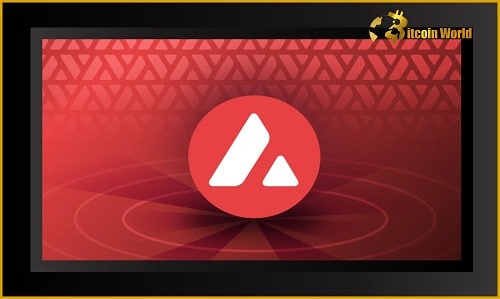Is Ethereum facing a serious contender in the smart contract platform arena? Recent data suggests a significant shift in the blockchain landscape, with Avalanche making waves. On January 27th, according to Ava Labs CEO Emin Gün Sirer, Avalanche processed a staggering 1.1 million transactions. Let’s dive into what this means and why it’s causing a stir in the crypto world.
Avalanche Closing the Gap: A Real Threat to Ethereum’s Dominance?
Think about it – Avalanche has now captured a whopping 96% of Ethereum’s transaction load! That’s not just impressive; it’s a potential game-changer. For years, Ethereum has been the undisputed king of smart contract platforms. But could we be witnessing the beginning of a shift in power? Let’s break down why Avalanche is gaining so much traction.
What’s Driving Avalanche’s Transaction Surge?
Several factors are contributing to Avalanche’s rapid growth, but one stands out prominently: transaction fees.
According to recent data, the average cost for a swap operation on Avalanche is a mere $0.23. Now, compare that to Ethereum, where the same operation could set you back a hefty $62! That’s a massive difference, and it directly impacts users, especially those engaging in frequent transactions within the Decentralized Finance (DeFi) space.
As Messari highlighted in their report, Avalanche is becoming increasingly attractive to “fee-sensitive” users. This makes perfect sense. In the world of crypto, where transaction costs can quickly eat into your profits, a platform offering significantly lower fees is incredibly appealing.
Avalanche vs. Ethereum: By the Numbers
Let’s put these transaction volumes and fees into perspective:
- Transaction Volume: On January 27th, Avalanche hit 1.1 million transactions, closing in on Ethereum’s daily average.
- Daily Transactions (Q4 2021): Avalanche averaged 475,000 daily transactions, while Ethereum averaged 1.25 million. Avalanche is clearly catching up.
- Transaction Fees: Avalanche boasts an average swap fee of $0.23, compared to Ethereum’s significantly higher $62.
- Total Value Locked (TVL): Avalanche currently holds $8.17 billion in TVL, making it the fifth-largest smart contract platform according to DefiLlama.
These numbers paint a clear picture: Avalanche is not just a newcomer; it’s a serious contender rapidly gaining ground.
Why Are Lower Fees Such a Big Deal?
In the decentralized world, especially within DeFi, transaction fees, often referred to as gas fees on Ethereum, are a crucial factor. High fees can:
- Deter small investors: For users with smaller portfolios, exorbitant gas fees can make participating in DeFi activities like swapping tokens or providing liquidity prohibitively expensive.
- Reduce profitability: Frequent traders and those engaging in yield farming are highly sensitive to transaction costs. High fees directly impact their returns.
- Hinder adoption: For mainstream adoption to occur, blockchain platforms need to be accessible and affordable for everyone. High fees create a barrier to entry.
Avalanche’s low-fee environment directly addresses these challenges, making it an attractive alternative for a wide range of users and projects.
Is Avalanche Truly Decentralized? Addressing the Concerns
While celebrating Avalanche’s impressive growth, it’s important to address the elephant in the room – decentralization. Concerns have been raised about Avalanche’s level of decentralization compared to Ethereum. Emin Gün Sirer, CEO of Ava Labs, directly addressed these concerns in a series of tweets, arguing that even Ethereum’s blockchain production is concentrated among a small number of pools.
The debate around decentralization is complex and ongoing for many blockchain platforms. It’s a critical aspect to consider when evaluating the long-term viability and security of any cryptocurrency network. Further research and analysis are always encouraged to form your own informed opinion.
What Does This Mean for the Future of Ethereum and Altcoins?
Avalanche’s surge in transaction volume is a significant development for the crypto ecosystem. It highlights a few key trends:
- Demand for Scalability and Lower Fees: Users are actively seeking platforms that offer faster and cheaper transactions. This is a clear signal to all blockchain projects, including Ethereum.
- Rise of Ethereum Alternatives: Avalanche is not alone. Other altcoins and layer-2 solutions are also emerging, offering improved scalability and lower fees compared to Ethereum’s mainnet. This competition is healthy for the crypto space as a whole, driving innovation and user-centric solutions.
- Ethereum 2.0 and the Future: Ethereum is aware of these challenges and is actively working on Ethereum 2.0 (now referred to as the Merge and subsequent upgrades), which promises to address scalability and fee issues through sharding and proof-of-stake. The success of these upgrades will be crucial for Ethereum to maintain its dominant position.
The race is on! Avalanche’s recent performance serves as a powerful reminder that the blockchain landscape is dynamic and constantly evolving. While Ethereum remains a powerhouse, platforms like Avalanche are rapidly innovating and attracting users with compelling solutions. It will be fascinating to watch how this competition unfolds and shapes the future of decentralized finance.
Are you keeping an eye on ETH price and AVAX? The performance of these platforms and their respective tokens will undoubtedly be influenced by these ongoing developments. Understanding the technology, adoption rates, and competitive landscape is crucial for anyone involved in the cryptocurrency market.
To stay updated on the latest developments in the crypto world, including Ethereum prices, Ether price, and the rise of platforms like Avalanche, keep following us for in-depth analysis and insights.
Related Posts – Ex-SEC Chair, Jay Clayton Believes Cryptocurrency Industry Is For Long Haul
A Digital European Project In Works With Italian Payments Provider Nexi
Disclaimer: The information provided is not trading advice, Bitcoinworld.co.in holds no liability for any investments made based on the information provided on this page. We strongly recommend independent research and/or consultation with a qualified professional before making any investment decisions.


